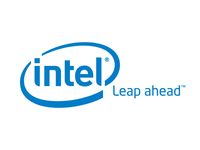"Larrabee" Still Expected in 2009 or 2010
Intel’s Larrabee still is on track for 2009 or 2010, with pressure looming.
With the new Intel Core i7 platform now released and out of the way, it becomes time to focus on the next big thing coming from Intel. While the mainstream versions of the Core i7 platform are something to look forward to in 2009, there is something even more exciting coming our way. Larrabee, Intel’s daring attempt of a discrete GPU, still seems to be on track for a potential release to market this time next year, as recent reports claim.
According to an updated news release on Intel’s website this week, "The first product based on Larrabee targets the PC’s graphics market and is expected in 2009 or 2010." While this tidbit neither confirms nor denies a 2009 release, it does gives us a sense that those at Intel still feel confident that Larrabee is on course.
Somewhat concerning though is that Intel’s Paul Otellini stated back in January that “Larrabee first silicon should be late this year in terms of samples and we’ll start playing with it and sampling it to developers and I still think we are on track for a product in late ’09, 2010 time frame." We are still waiting on news about Larrabee hitting silicon and the year is almost out; if that is not on time, a final product may not be seen until 2010.
There is however a recent report from Fudzilla that Larrabee is on track for the second half of 2009, although not for the desktop market. It would seem that Larrabee will hit the market first for the professional market, with a consumer oriented version not being released until 2010. Even more disappointing for some consumers is news that Larrabee may not be supported under good old Windows XP, but rather just Windows Vista and Windows 7. For Microsoft’s sake, let’s hope by 2010 that Windows XP support will not matter anymore at least.
According to Intel, Larrabee will be the industry’s first many-core x86 Intel architecture, with the first Larrabee products targeting discrete graphics applications. Larrabee will support DirectX and OpenGL and will be capable of running existing games and applications. Highly parallel applications, such as scientific and engineering software, will also see great benefits from the Larrabee’s native C/C++ programming model. While Larrabee does seem to offer some interesting benefits that gives it some distinction, it will still be facing competition from Nvidia and ATI upon its release and not simply with graphical gaming performance.
Products such as Nvidia Tesla and ATI Firestorm also are adept at running highly parallel applications in the professional market, with just this last week Nvidia having released its Tesla Personal Supercomputer. The Tesla Personal Supercomputer is capable of nearly 4 single-precision teraflops of computing power and is equipped with 3 or 4 Nvidia Tesla C1060 computing processors. Each Tesla C1060 is capable of almost a single-precision teraflop of computing power, while Larrabee is rumored to be expected with around 2 single-precision teraflops.
Get Tom's Hardware's best news and in-depth reviews, straight to your inbox.
Only time will tell how things pan out for sure though; Larrabee still has a while to go.
-
mtyermom I'm very interested in seeing how this will play out. Intel knows very well it's own track record (or lack thereof) in the performance graphics market. They know that they have to do something big hedre.Reply -
hellwig Intel needs to define the market it is going after. A simulataneous attack on all fronts (Video Games, Graphic Design, 3D Modelling, Scientific Computing) might not be a good idea. However, unless Larrabee can excel in any single area (if not, why enter the market), I suppose a multi-front attack is Intel's only choice.Reply -
JAYDEEJOHN Whats interesting is, going by known node shrinks, a current gpu in 2010 will be at least 3 times larger than todays gpus, meaning, theyll easily be out putting 4 Tera bytes, or, a top nVidia card could be like tri sli is today, or even better, plus, you can still tri sli those too. Some stiff competition to be running intoReply -
smalltime0 jaydeejohnWhats interesting is, going by known node shrinks, a current gpu in 2010 will be at least 3 times larger than todays gpus, meaning, theyll easily be out putting 4 Tera bytes, or, a top nVidia card could be like tri sli is today, or even better, plus, you can still tri sli those too. Some stiff competition to be running intoI presume you mean Teraflops, but even still that will only be in single-point precision.Reply
I think Intel's idea behind larabee should see less opf a performance deacrease when entering the doube point precision arena. -
tipoo larrabee or laughabee, we will see. having 3 companies in the high-end GPU segment might get funky.Reply -
mtyermom It could be a flop... or it could bring a new level of competition into an already competitive market. Time will tell...Reply
-
Pei-chen Or Intel could buy out Nvidia and divide the PC market into an upper and lower where AMD becomes a bottom feeder.Reply -
JAYDEEJOHN Yea, Tera FLOPS, tried to edit, but no edit. The numbers Ive given are all VERY conservative, and may be worse case, meaning it can be as much as 2 1/2 times more also. Im thinking LRB will be primarily for what we call gpgpu things, and if priced right, may see some ability playing games as well, but the drivers Intel has to implement, including allll the different games.....lots to do, and Intel drivers? Im skeptical, but maybe itll be promisingReply -
ravenware ReplyLarrabee may not be supported under good old Windows XP, but rather just Windows Vista and Windows 7
Larrabee will support DirectX and OpenGL and will be capable of running existing games and applications
Ehh?
